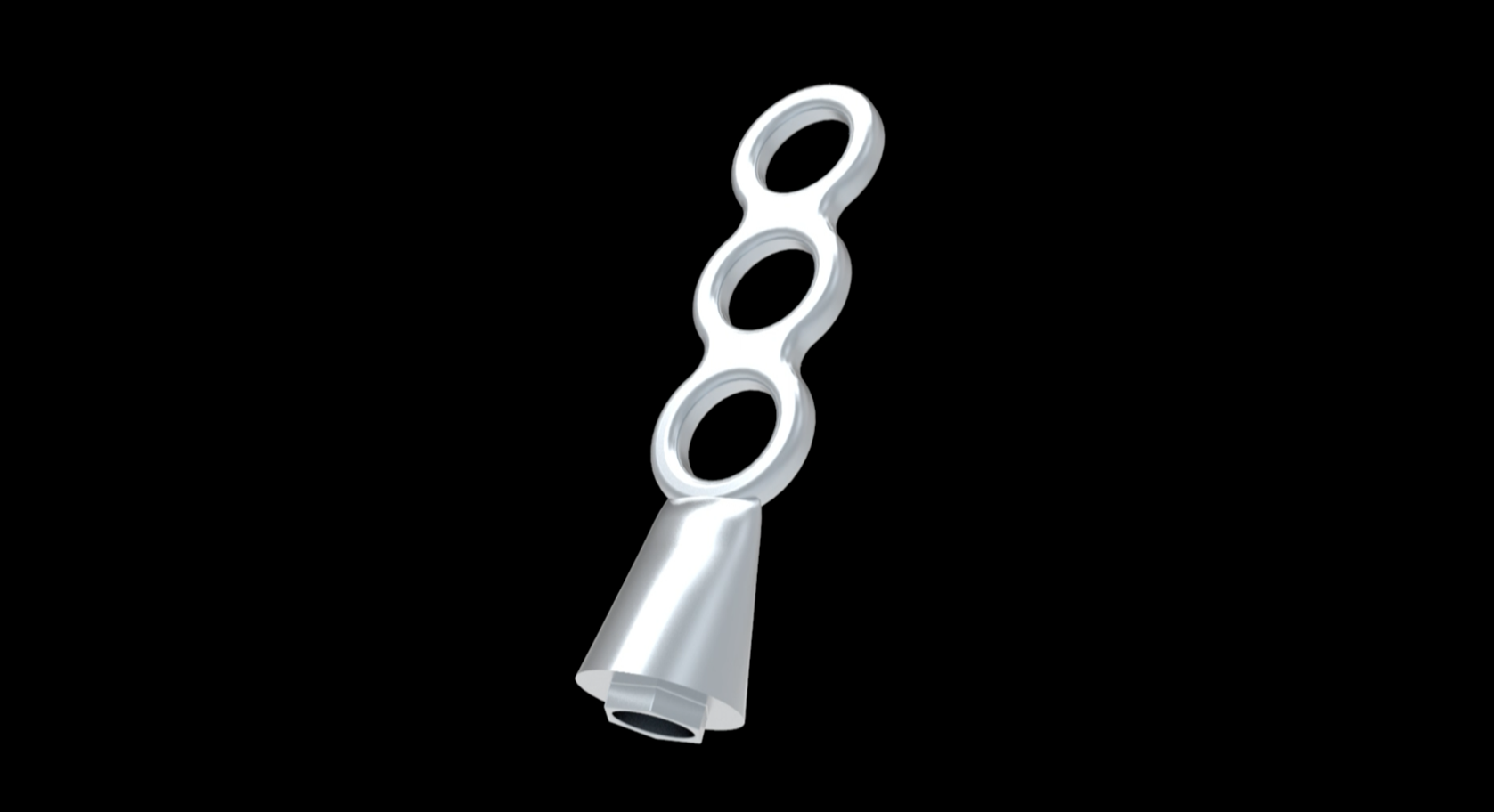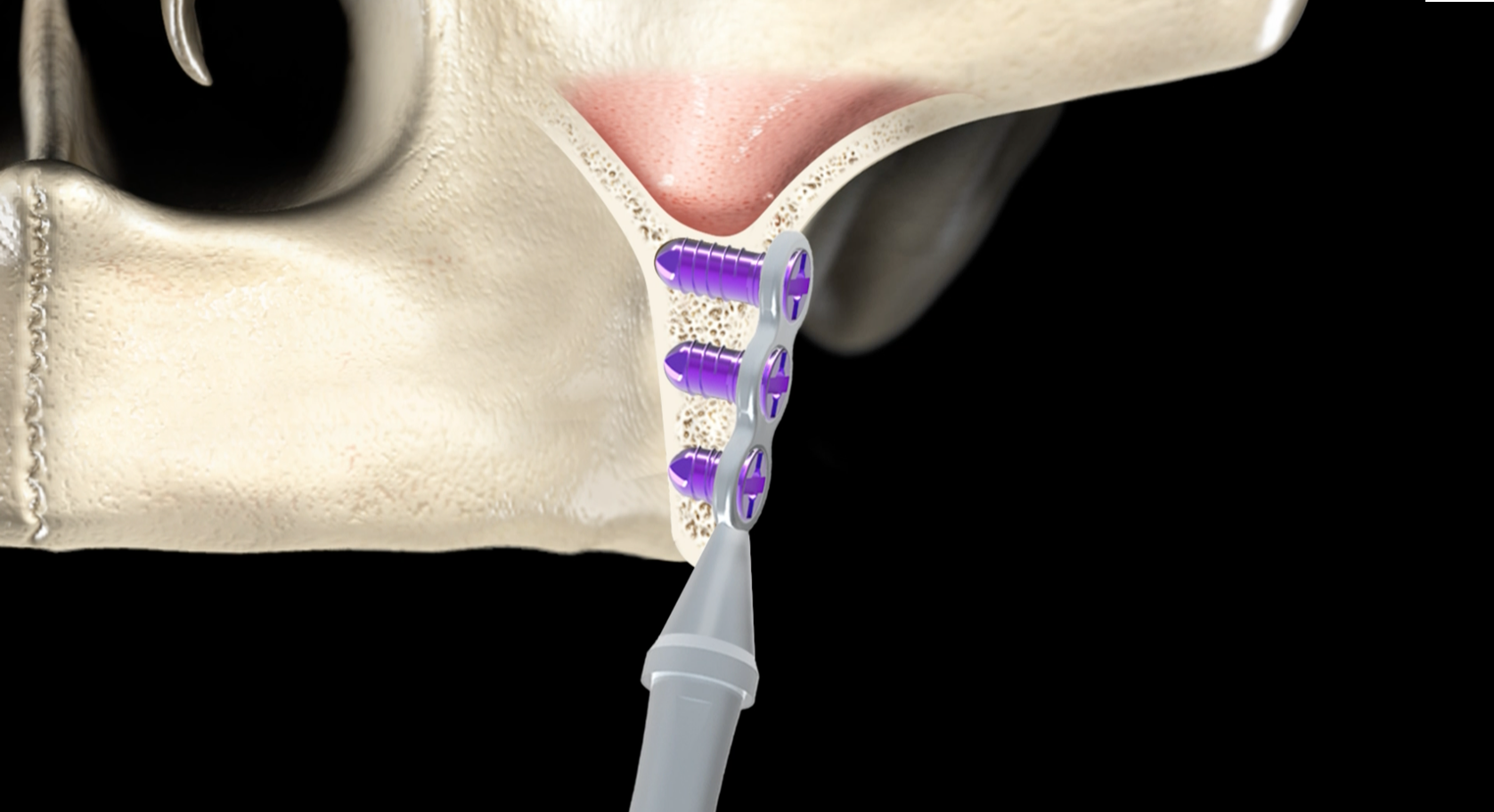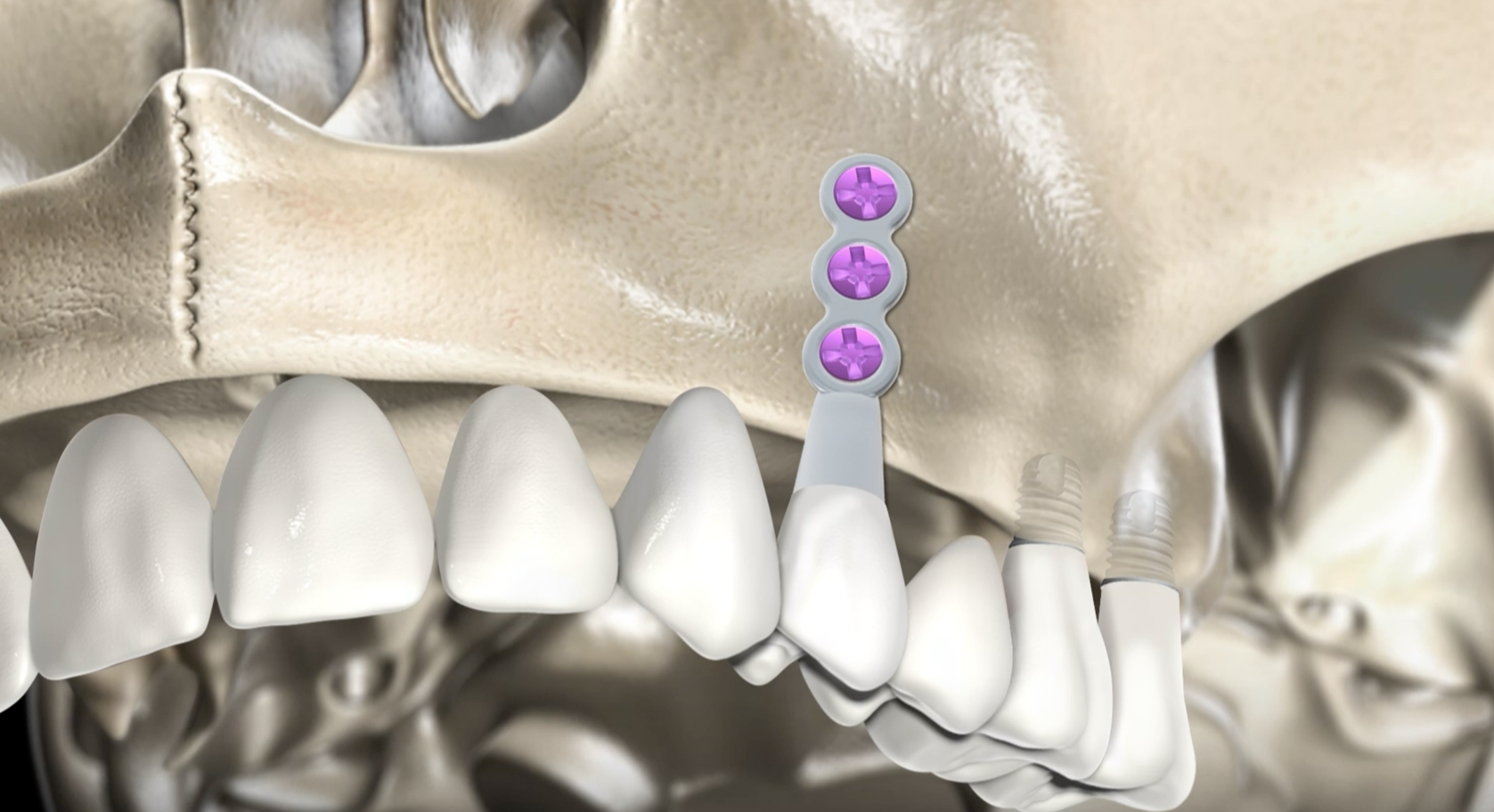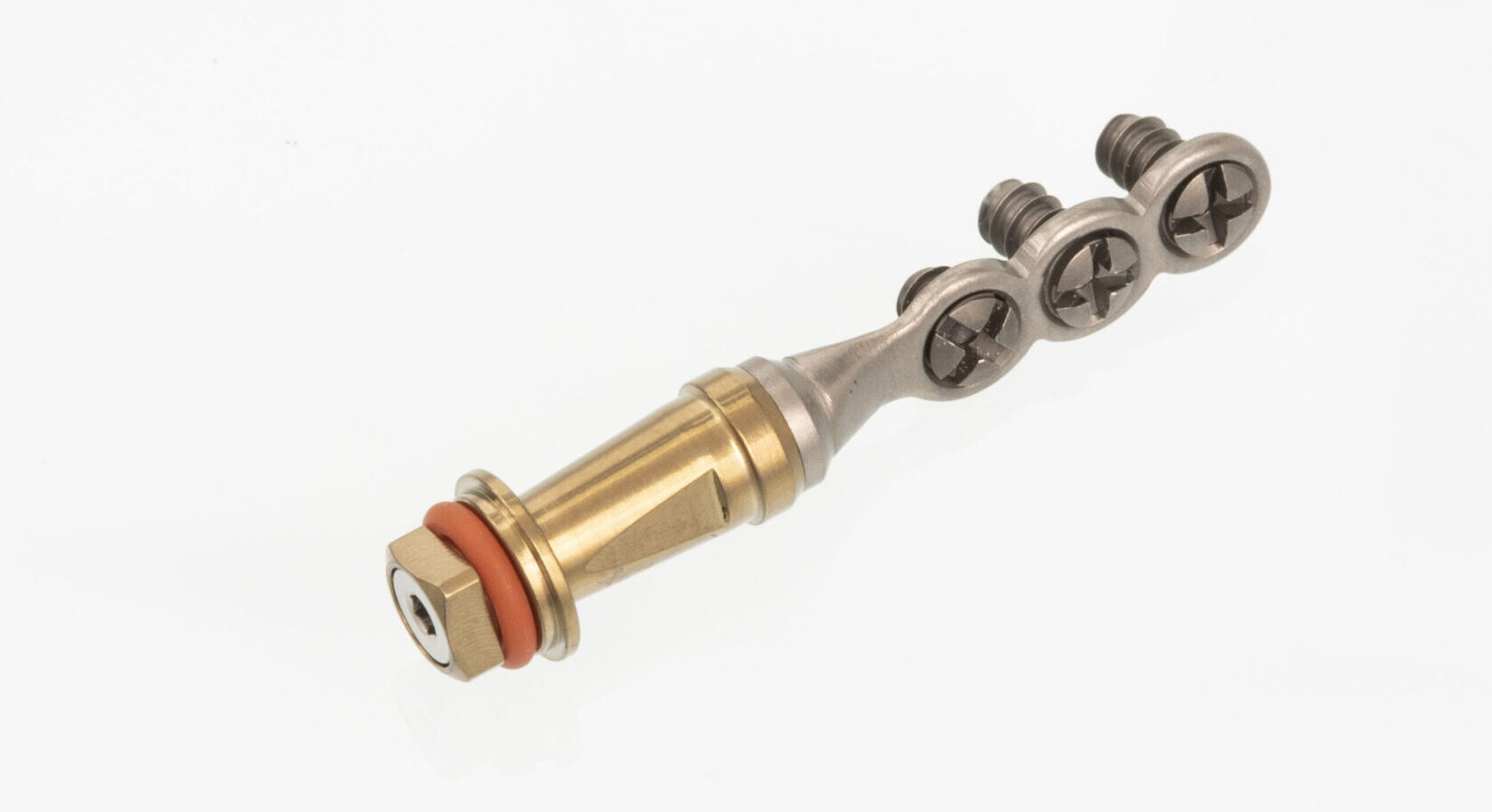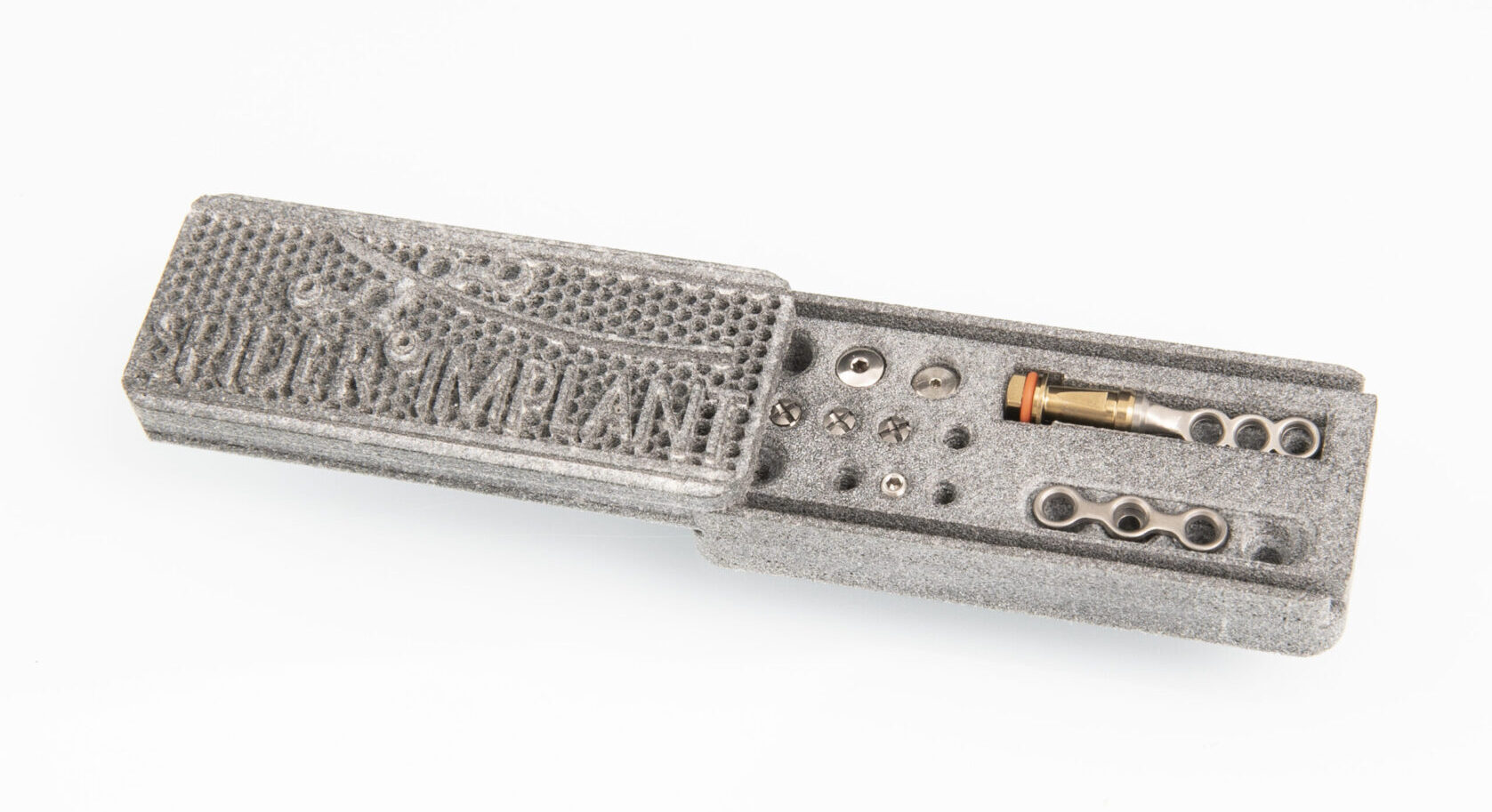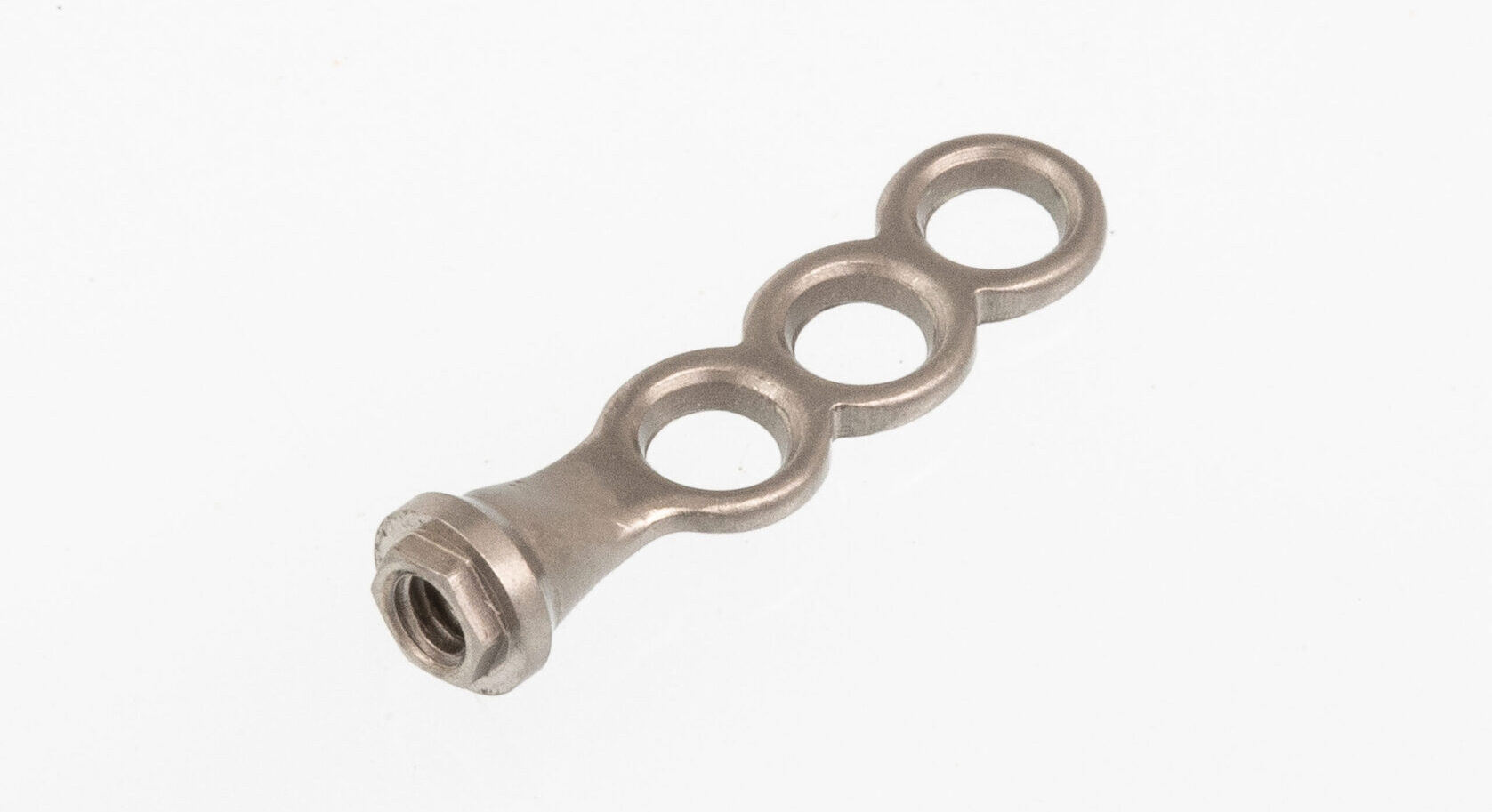Products → Transverse atrophy solutions / PlateImplant
The current context
The pre-maxilla area is a common site of combined (vertical and transverse) or exclusively transverse atrophies. The solutions currently available involve the use of more or less invasive reconstructive techniques: G.B.R. ⎋, Split-Crest, Bone Grafting. Alternatively, Dentists can use "narrow» implants with reduced diameter. There are several weaknesses of the aforementioned solutions (in addition to the incompatibility with immediate loading):
► Reconstructive surgical techniques are characterised by considerable "biological" and economic costs: the morbidity of the donor site for Bone Grafting and high bio-material costs for G.B.R. Post-operative complications can then be various, from the exposure of membranes and grafting materials (G.B.R.) to bone sequestrations (Bone Grafting).
► On the implant solution side, the "narrow" implants are burdened by "weakness" from the biomechanical aspect with possible risk of fracture. Even the recently proposed restylings of the "old blades" do not appear particularly reliable.
The solution
With PlateImplant®, SPIDERIMPLANT offers Dentists a simpliefied, quicker, less risky solution to support surgery in cases of transverse atrophy in the premaxilla. PlateImplant, indeed, allows dentists to even treat extreme cases of transverse atrophy with a procedure allowing immediate loading and without resorting to complex resconstructive techniques.
"PlateImplant® uses the overarching SPIDERIMPLANT principles and allows the insertion of osteintegrated fixtures (TwinImplants®) transversally to the implant-prosthetic axis. This generates a single, stable and long-lasting implant entity thanks to the full exploitation of the residual jaw bone, the multi-corticalism and the mechanical strength generated by the self-locking coupling between the plate and fixtures (tripodism)".
- The product
- Technical details
- Use procedure
Further structural simplification has been achieved with PlateImplant®, leading to only two structural components:
‣ A self-locking plate with a prosthetic platform: Locking Plate.
‣ Three self-locking fixtures of different size: Locking Fixtures.
The endosseous component of the implant represented by the 3 Locking Fixtures results in an osteointegrated surface equivalent to that of a normal 13-15 mm long "narrow" implant. However, the engagement of both vertibular and palatal surfaces enables the placement of PlateImplant® where a "narrow" implant would be unusable. The subperiosteal component consists entirely of the Locking Plate. The firm coupling by interference of the components guarantees stability, perfect tissue integration and absence of any form of bone resorption (typical of the alternative subperistal implants).
‣ Main implant body: Locking Plate in Grade 2 or Grade 5 Titanium with one end equipped with a prosthetic platform Shaped as an hexagon externally. Total length variable from 14 to 18 mm.
‣ Peripheral implants (TwinImplants®) of truncated cone shape and with traumatic apex, in Titanium Grade 5, solidarized with locking by interference (in one or more sizes).
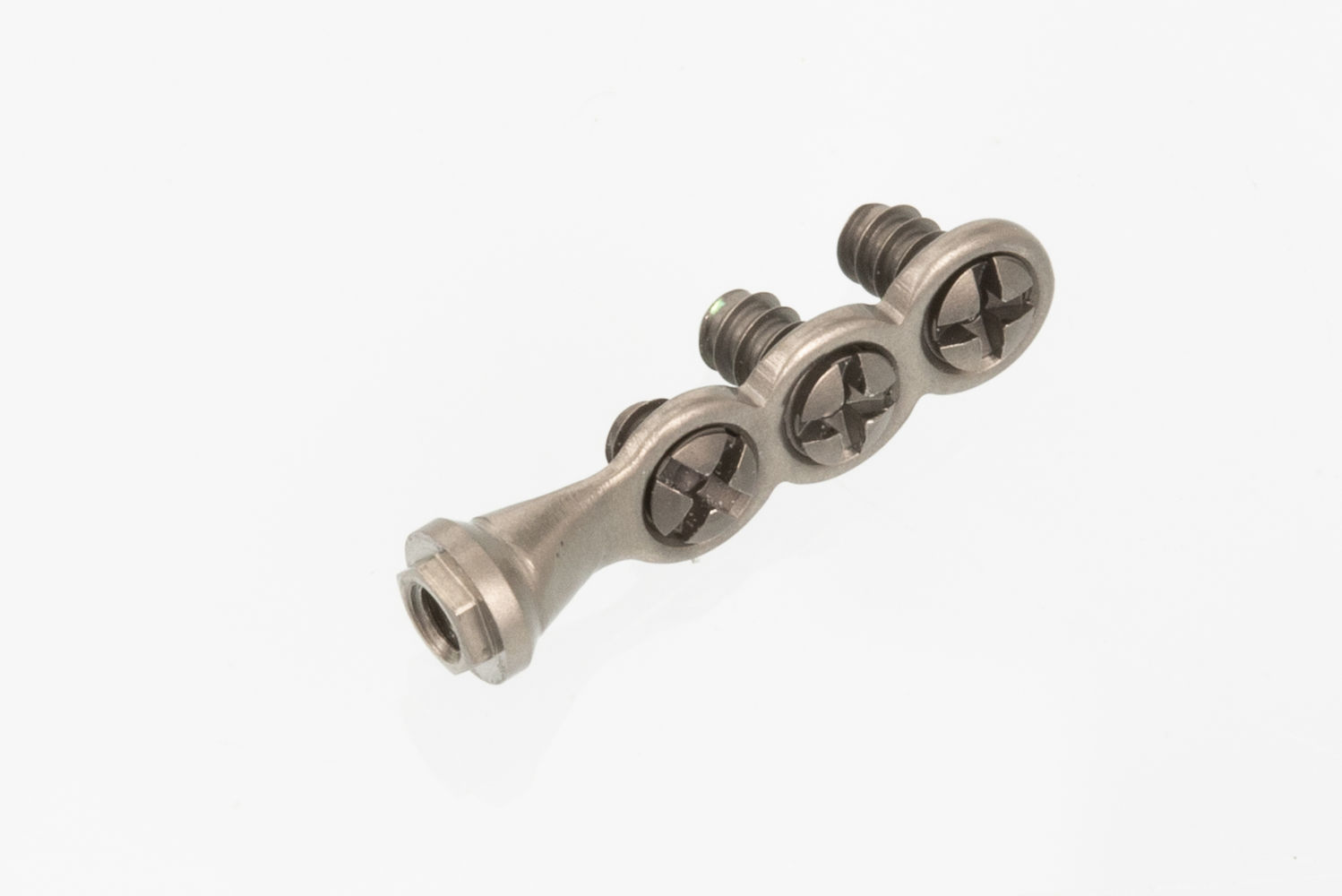 |
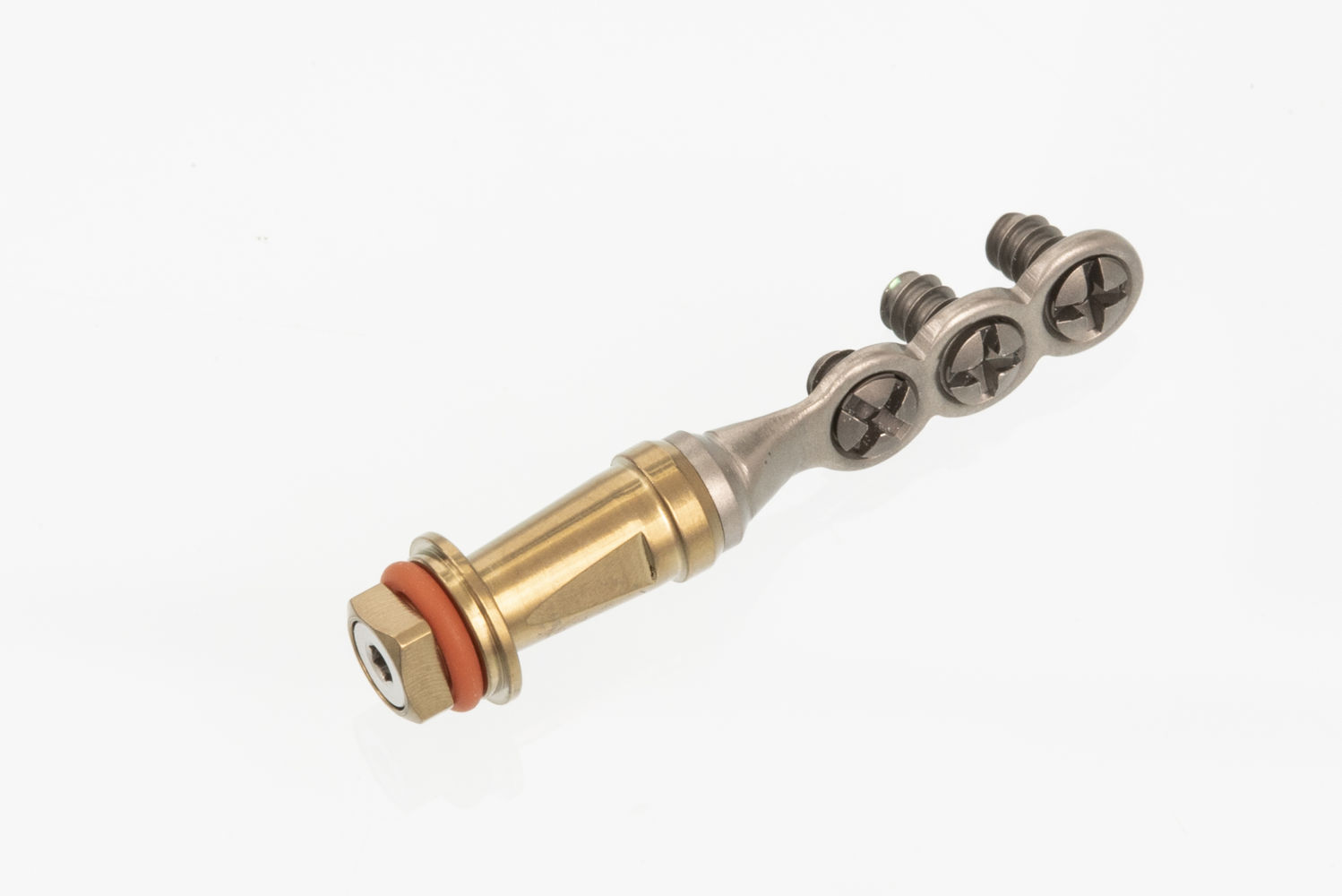 |
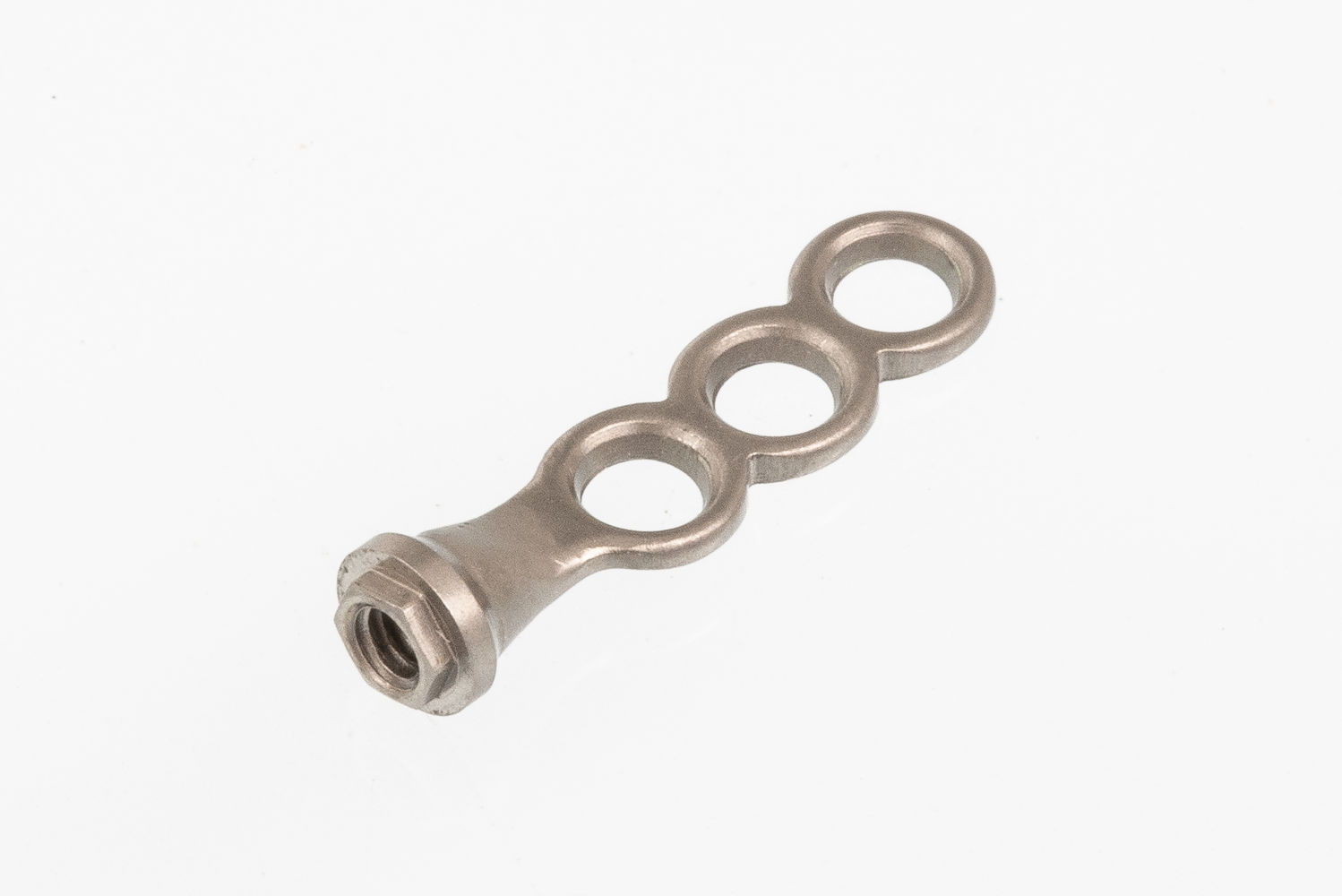 |
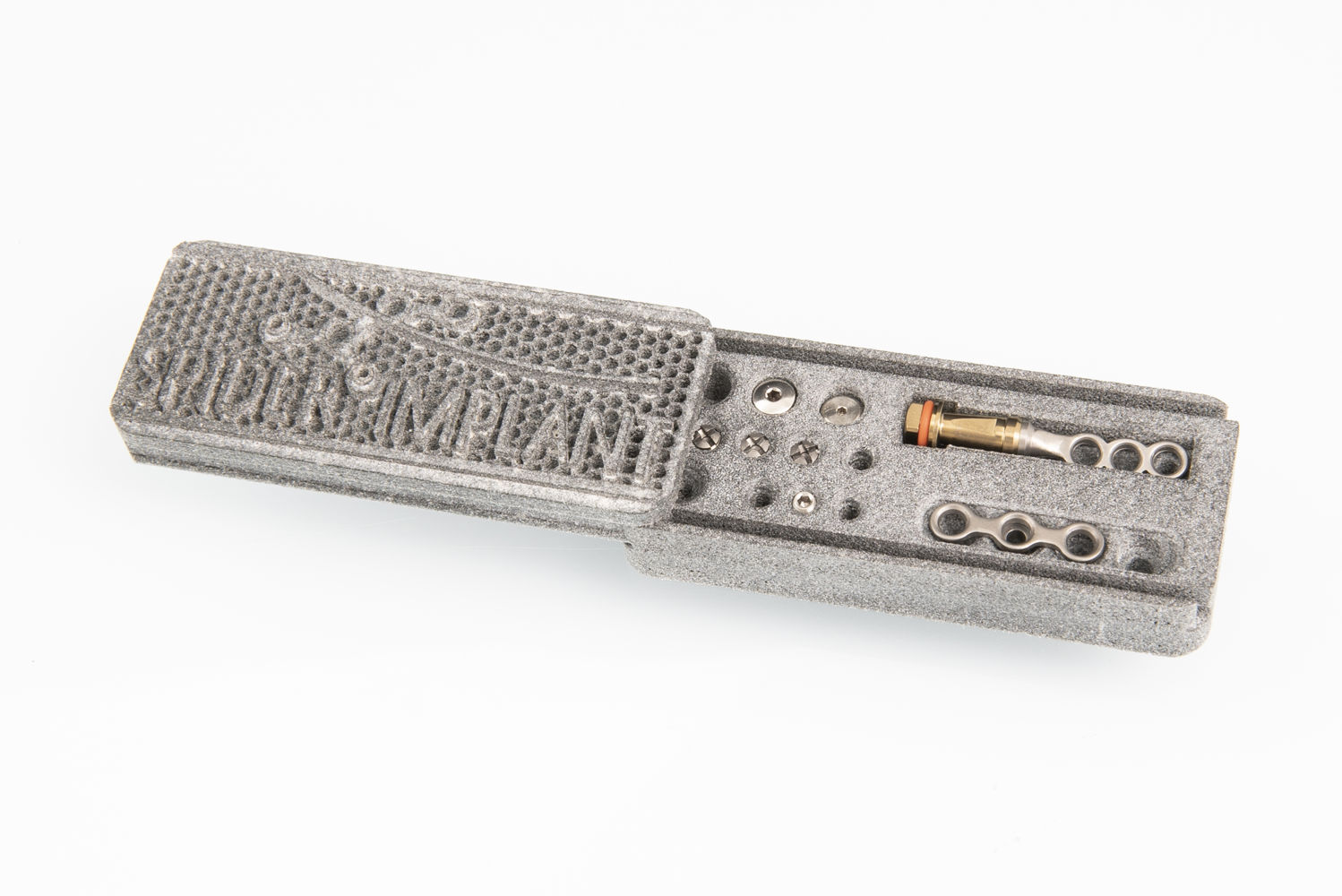 |
The surgical technique is even simpler than in solutions for vertical atrophies, thanks to the reduced assembly steps that characterise the application of PlateImplant®:
1) Limited skeletonization of the surgical site.
2) Possible shaping of the Locking Plate.
3) Creation of three small transversal perforations, from vertibular cortical to palatine cortical, for the insertion of the 3 Locking Fixtures.
4) Application of Locking Plate on the vestibular bone surface.
5) At the same time as the plate is placed, the Locking Fixtures are inserted (auto-blocked).
Discover the clinical cases of PlateImplant® on the dedicated page ⇒
Why choose our products


SIMPLE
A structure common to all SPIDERIMPLANT
solutions, with only three components, simplifies the
therapy of any type of bone atrophy.


PRACTICAL
The practicality and effectiveness of our solutions are demonstrated by the exceptional primary
stability and excellent tissue integration.


INTEROPERABLE
The concept of “rigid connection for
interference between implants and plates” applies to all products with multiple coupling variants. This modularity allows to deal with different problems with the same
technology.


DISTINCT
In contrast to standard (or custom) systems on the market today, what makes our products unique is that they can be customised even in intra-operative operations.


EASY-TO-USE
Users are guaranteed the execution of simplified manoeuvres, less dangerous and more tolerable by patients.


REVOLUTIONARY
The idea of totally eliminating the need for pre-implantological bone reconstruction in all types of
atrophy is truly revolutionary.
